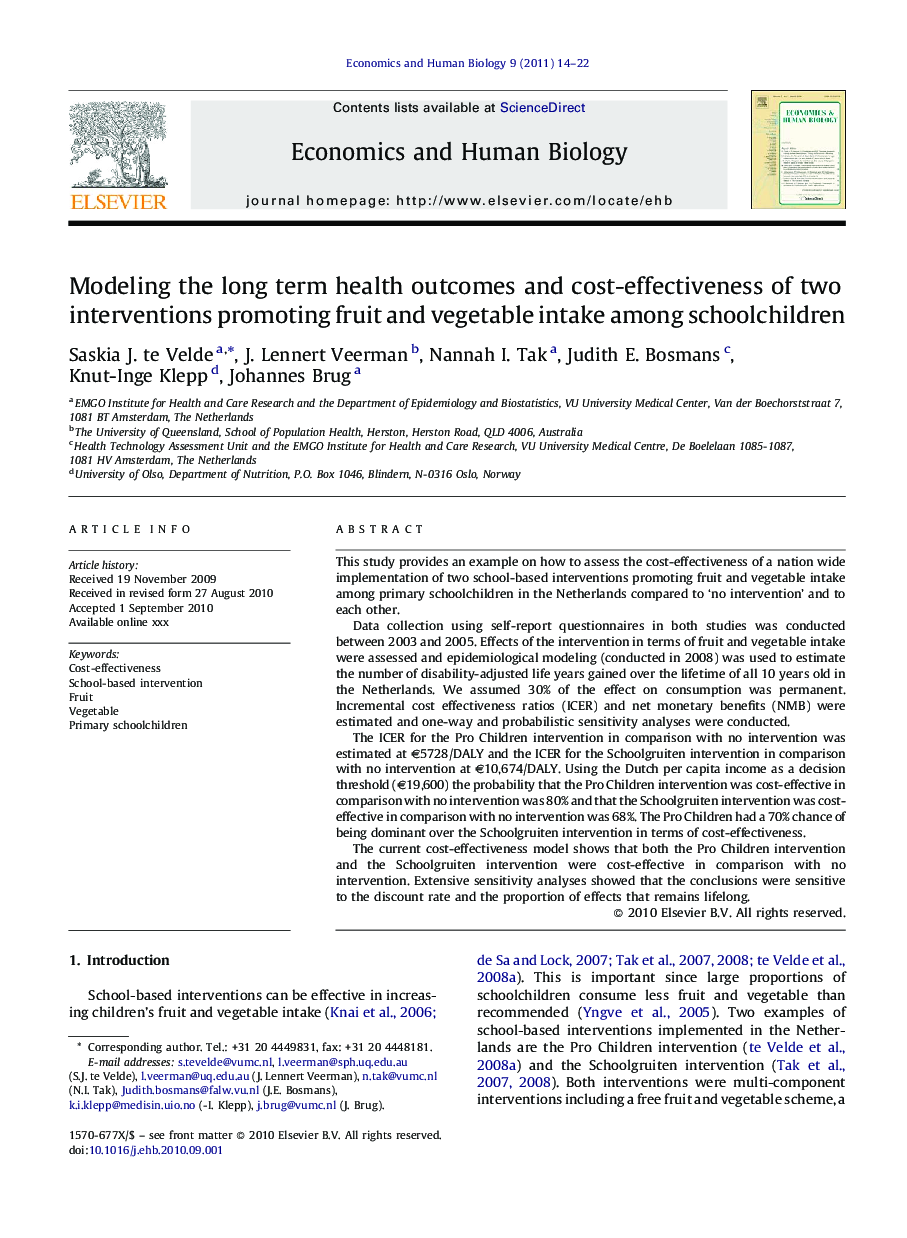| Article ID | Journal | Published Year | Pages | File Type |
|---|---|---|---|---|
| 5057264 | Economics & Human Biology | 2011 | 9 Pages |
This study provides an example on how to assess the cost-effectiveness of a nation wide implementation of two school-based interventions promoting fruit and vegetable intake among primary schoolchildren in the Netherlands compared to 'no intervention' and to each other.Data collection using self-report questionnaires in both studies was conducted between 2003 and 2005. Effects of the intervention in terms of fruit and vegetable intake were assessed and epidemiological modeling (conducted in 2008) was used to estimate the number of disability-adjusted life years gained over the lifetime of all 10 years old in the Netherlands. We assumed 30% of the effect on consumption was permanent. Incremental cost effectiveness ratios (ICER) and net monetary benefits (NMB) were estimated and one-way and probabilistic sensitivity analyses were conducted.The ICER for the Pro Children intervention in comparison with no intervention was estimated at â¬5728/DALY and the ICER for the Schoolgruiten intervention in comparison with no intervention at â¬10,674/DALY. Using the Dutch per capita income as a decision threshold (â¬19,600) the probability that the Pro Children intervention was cost-effective in comparison with no intervention was 80% and that the Schoolgruiten intervention was cost-effective in comparison with no intervention was 68%. The Pro Children had a 70% chance of being dominant over the Schoolgruiten intervention in terms of cost-effectiveness.The current cost-effectiveness model shows that both the Pro Children intervention and the Schoolgruiten intervention were cost-effective in comparison with no intervention. Extensive sensitivity analyses showed that the conclusions were sensitive to the discount rate and the proportion of effects that remains lifelong.
